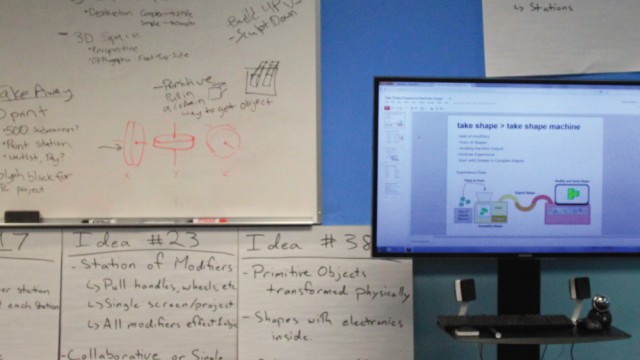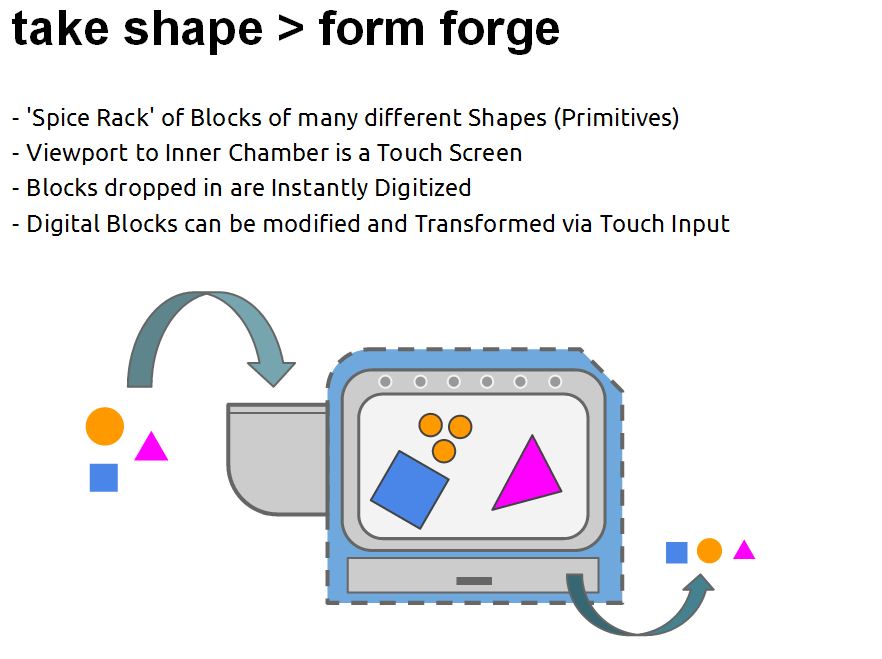
Brainstorm for Days
In the early stages of the project everyone on the team is focused on full blown research. What is out there, what has been done, what technologies have been used, how do children learn, what interests children, what do children think is a ‘fun’ activity, what do the parents view as an enjoyable co-habitable experience, what does our client like, what fits the style of the MAKESHOP and how can we use this information to arm ourselves against the goal; to teach children 3D modeling.
Given our demographic of guests at the MAKESHOP we initially sought out to explore
 the likes of Dr. Seuss, Play-Doh and the classic Bop-it! toy in order to find connections between the success of all three. The wonderful Dr. Seuss stories and accompanying visuals provided instant discussion about a potential machine that children could dump their blocks into and have them magically digitized onto a screen. Once on the screen they would be able to manipulate their primitive shapes in a variety of controlled settings. These settings would be a bank of modifiers that by pulling, twisting, stretching or rotating (to name a few) would have a direct, one-to-one, connection with the digital model.
the likes of Dr. Seuss, Play-Doh and the classic Bop-it! toy in order to find connections between the success of all three. The wonderful Dr. Seuss stories and accompanying visuals provided instant discussion about a potential machine that children could dump their blocks into and have them magically digitized onto a screen. Once on the screen they would be able to manipulate their primitive shapes in a variety of controlled settings. These settings would be a bank of modifiers that by pulling, twisting, stretching or rotating (to name a few) would have a direct, one-to-one, connection with the digital model.
Something the team, and the client, strongly agree on is an absolute need for the connection of 3-Dimensional objects being displayed on a 2-Dimensional surface. Even for adults, the idea of moving a camera or object within 3D space while looking at a flat plane is a difficult concept to grasp. From visiting the museum we quickly realized that all exhibits within the space feature some sort of tangible, physical element, for the kids to play with while learning and developing on the overall goal the exhibit exudes. This realization moved us away from some of our ideas, such as a fully digital ‘sandbox’ that would be a version of a touch-driven digital surface table.
The idea of an exhibit that would have multiple stations, each based on a different set of modifiers that would allow children to ‘push’ their object from one to the other was also explored. Our client mentioned the reality of a child’s thought process and its lacking awareness of personal space may be a detriment to a subdivided exhibit.